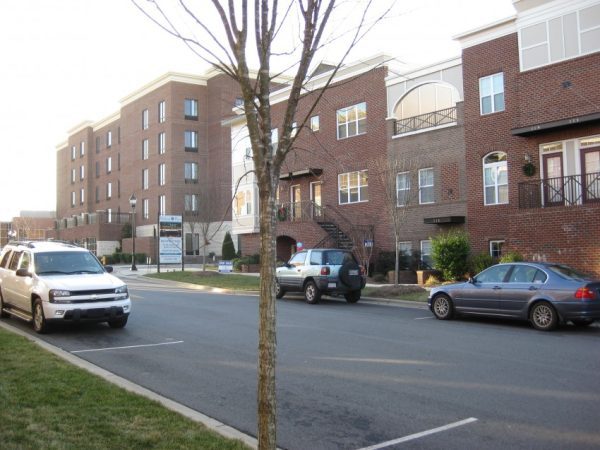Measure to encourage low-income housing wins council OK

The Charlotte City Council, with no discussion, Monday unanimously OK’d a measure to try to encourage developers to build more low-income housing in affluent neighborhoods. The council also heard a series of pro- and con- speeches concerning a proposed outlet-store center in southwest Mecklenburg County.
The affordable housing measure, an amendment to the city zoning ordinance, is voluntary, not mandatory. Many cities across the nation, including Davidson in north Mecklenburg, require a certain percentage of units built in developments to be set aside for subsidized housing. Instead, Charlotte will use a carrot: if a developer will add units aimed at people earning less than the area median income, the developer can build more units per acre.
Will the voluntary measure accomplish its goal? Some experts have doubts.
It’s one of a number of initiatives the city has studied – and in some cases adopted – to try to increase the amount of housing that lower-income households can afford, and to try to spread it around the city, particularly into the more affluent areas of south Charlotte. (See “Garage apartments now legal; duplex move stalls.”)
Some details of the measure:
How many more units? It applies to developments zoned for 8 or 12 multifamily units an acre (R-8MF, or R-12MF). With R-8MF zoning a developer could add up to two more units per acre, and in R-12MF up to three units per acre – if some of the units meet affordability requirements. If the site is within a half-mile of a transit stop, including bus service, another two units per acre can be added.
Who’s the target market? At least half the extra units allowed must target households with incomes of 80 percent or less of the “area median income.” (The U.S. Census reports Charlotte’s median household income is $53,146.) At least half of those units must target households earning only 60 percent or less of the area median income. The total number of units targeted at lower-income households can’t be more than 20 percent of the total units in the development.
Where will they be? To try to keep low-income housing from overwhelming neighborhoods that already have a lot of it, the measure requires the development to be in a census block group that’s at or above the median home value for Charlotte. (The U.S. Census says the median value of owner-occupied housing in Charlotte is $174,100; the measure the ordinance uses would be slightly different.) Find average housing values for specific neighborhoods here.
Will it work? Possibly, though at least one developer has expressed doubts. In a report aired Monday by WFAE, developer Chad Hagler, president of the Greater Charlotte Apartment Association, said: “When you have affordable units in a property there is a loss of income forever, and receiving a density bonus to allow you to build a few more units doesn’t necessarily change the economics of a development to the degree that will you know entice us to build those affordable units.” Here’s a link to the WFAE piece.
Consider what UNC Charlotte real estate expert Dustin Read wrote a year ago. Read heads UNC Charlotte’s Center for Real Estate. In a February 2012 article in for the UNC Charlotte Urban Institute, “Affordable housing policy: voluntary or mandatory,” he wrote that studies show voluntary programs are less likely to create as many affordable units or to spread them into all parts of a city, including more affluent areas. On the other hand, they’re less likely than mandatory programs to push up housing costs.
To learn more:
- Read about inclusionary zoning in a report issued this month from the National Housing Conference, “After the downturn: New Challenges and Opportunities for Inclusionary Housing.”
- Read the Charlotte planning staff analysis of the city measure here.
- Read the full text of the ordinance the council adopted by downloading this document.
The council also:
Heard a request for money. At its dinner meeting, heard a request from developers of the proposed Tanger Outlet Center for $5.1 million in property tax rebates from the city and county. Using future tax revenue to repay a developer for building needed infrastructure such as streets or roads isn’t unprecedented for Charlotte. The city did something similar for the IKEA in University City.
The shopping center – which would not be an enclosed mall – would be jointly developed by Tanger and Simon, with Childress Klein. The property owner is Sarah Belk Gambrell. The site is at Interstate 485 and Steele Creek Road. Developers would widen Dixie River Road from two to four lanes, add a turn lane on Shopton Road and make other improvements. Click here for the planning staff’s analysis of the project, and here for Tuesday’s Charlotte Observer article about the request for funding.
Heard pro- and con- speakers. At the later public hearing, several speakers cautioned about the condition of the Brown’s Cove on Lake Wylie; the development would drain into the cove. As Observer reporter Bruce Henderson documented in a Sunday article, “Brown’s Cove remains ruddy mess as silt buildup, construction continues,” the cove is silted in, due to construction and development in the area.
Designated a historic landmark. Approved designating a Third Ward bungalow as a historic landmark. The house, built about 1909 or 1910, is at 1015 W. Fourth St. The Charlotte-Mecklenburg Historic Landmarks Commission report said the bungalow “may very well contain the most complete and best preserved Craftsman Style bungalow interior in the City of Charlotte.” Only District 1 council member Patsy Kinsey voted against the proposal.
Heard complaints. The council listened to concerns from SouthPark-area neighbors worried about a proposed townhouse development off Park Drive South that they say would be too tall – it’s two stories high, but set atop a hill – and create drainage issues. The neighbors said they like their low-density, suburban neighborhood. The site is about a mile from Piedmont Row and SouthPark.